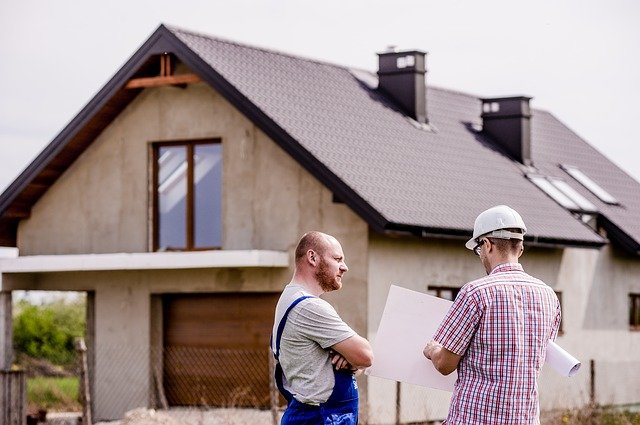
There certainly is a light at the end of the tunnel now that we're taking steps towards the end of lockdown. That being said, it's important that tradespeople entering our homes are still following guidelines and working safely to reduce the spread of coronavirus.
Things have a tendency to stop working at the most inconvenient times, and without tradespeople, there would've been a lot of homeowners without electricity, hot water, and other amenities during the pandemic.
It's really important that tradespeople can continue to enter our homes to do repairs and maintenance, but until the spread of coronavirus drops dramatically, we all need to remain cautious. Today, we're going to highlight some of the precautions that tradespeople should take when they're working in someone's home.
Should tradespeople wear a face covering while working?
Over the past year, we've all become accustomed to wearing face coverings in shops and enclosed public spaces. This is because face masks reduce the risk of coronavirus transmission.
Tradespeople entering your home should be wearing a face mask. If they're not wearing a face mask, you are well within your rights to request that they put one on. Ideally, tradespeople should come prepared with the following coronavirus PPE:
- A suitable face covering
- Gloves (or hand sanitiser)
- Shoe covers
All of these things will not only protect the homeowner, should the tradesperson unknowingly have coronavirus, but will also keep the tradesperson safe as they move from one job to the next.
Should I offer a tradesperson a cup of tea/coffee?
Before the coronavirus pandemic, it was courtesy to offer a tradesperson a cup of tea/coffee, especially if they were going to be working in our homes for a long time. However, it's important that you take precautions when tradespeople are in your home, so to reduce physical contact you might decide not to offer a tea or coffee.
This is absolutely fine and generally expected. Tradespeople understand that precautions are in place, and will more than likely have a flask or tea of coffee in their van for lunchtime.
Should I clean the work area before & after a tradesperson visits my house?
During the pandemic, tradespeople are expected to do a certain level of cleaning while they're on the job. Surfaces that are touched in your home should be cleaned down by the tradespeople as they complete the job.
That being said, it's completely understandable if you're more comfortable cleaning the work area before and after their visit yourself. Not only will it make the tradesperson feel more comfortable, but it will also give you peace of mind that the risk has been minimised.
Should I vacate the work area while the tradespeople are in my home?
Removing yourself completely from the work area is a good way to reduce the risk of transmission. It will also make the tradespeople feel comfortable and give them the space they need to get the job done quickly.
Some of us are, however, working from home at the moment, so it might not be easy to avoid the work area completely. In circumstances where you need to access the same space as the tradespeople, it's recommended that you keep two metres away and limit contact as much as possible. If it's not too much hassle, the tradespeople may be able to step outside for a moment while you make your lunch or brush your teeth!
Final thoughts...
Most tradespeople (self-employed or not) will be used to working with strict coronavirus precautions in place, so you shouldn't need to worry about having work done in your home during this time.
It's vital that you keep a good line of communication open so that everyone is comfortable with the working situation. Don't be afraid to speak up if something doesn't sit right with you. We're all entitled to be extra-precautious to keep our colleagues and families safe.
By working together and communicating openly, tradespeople can continue to visit our homes and work effectively while minimising risk.
Are you a tradesperson looking for high-quality ladders & scaffolding to help you work during the coronavirus pandemic? Sign up for a trade account for huge discounts!
Shop Now >

 Ladders
Ladders  Step Ladders
Step Ladders  Loft Ladders
Loft Ladders  Scaffold Towers
Scaffold Towers 








